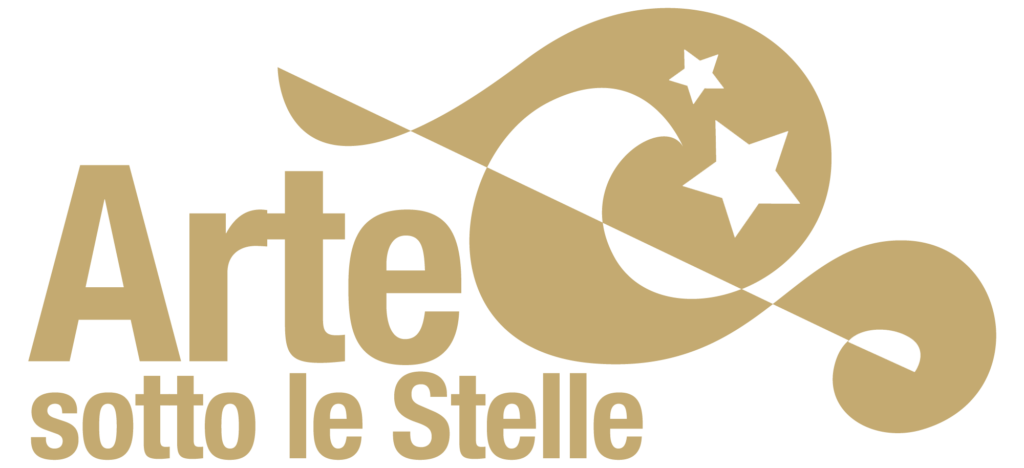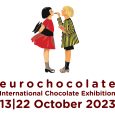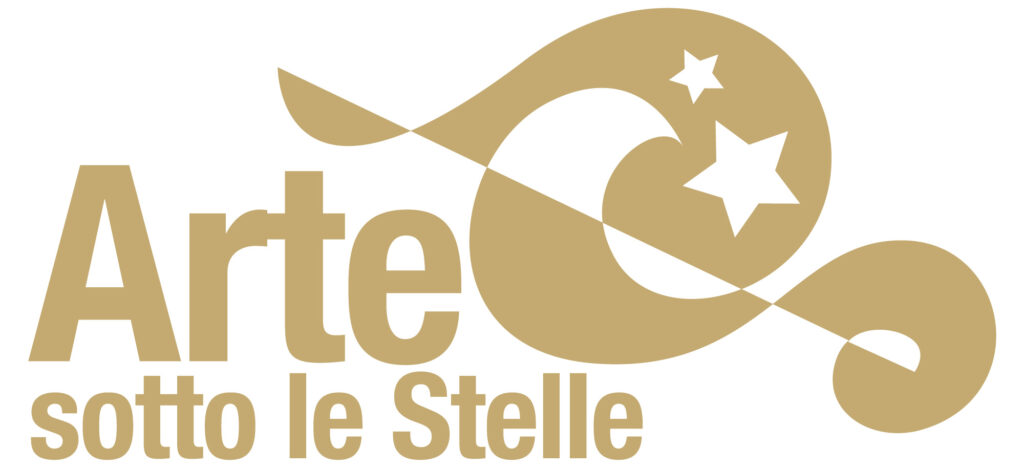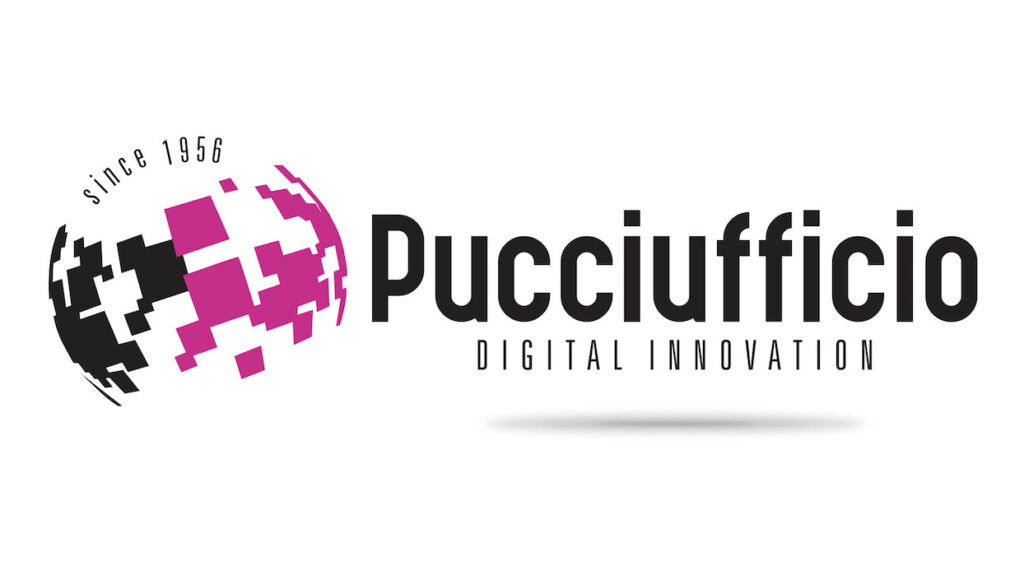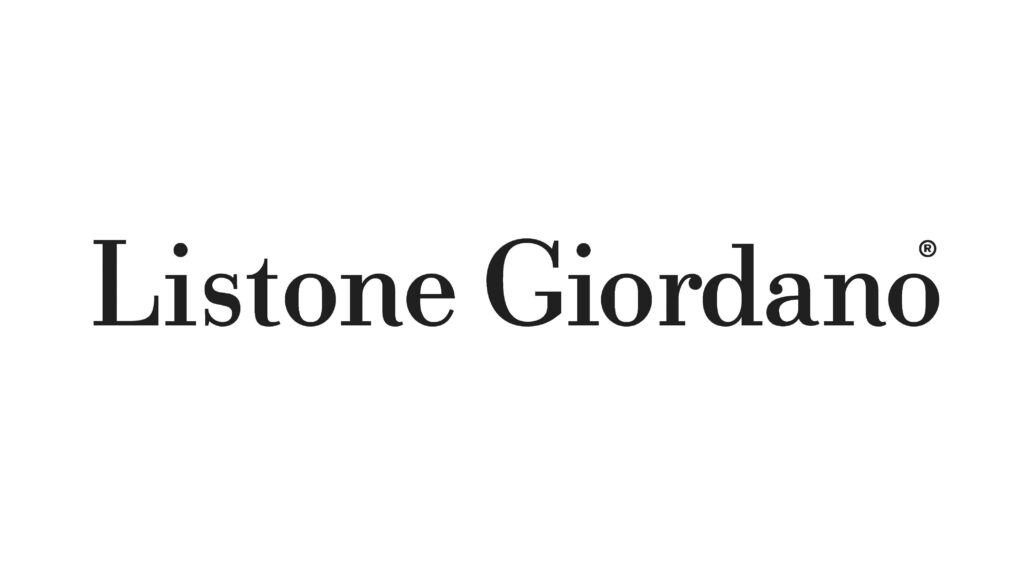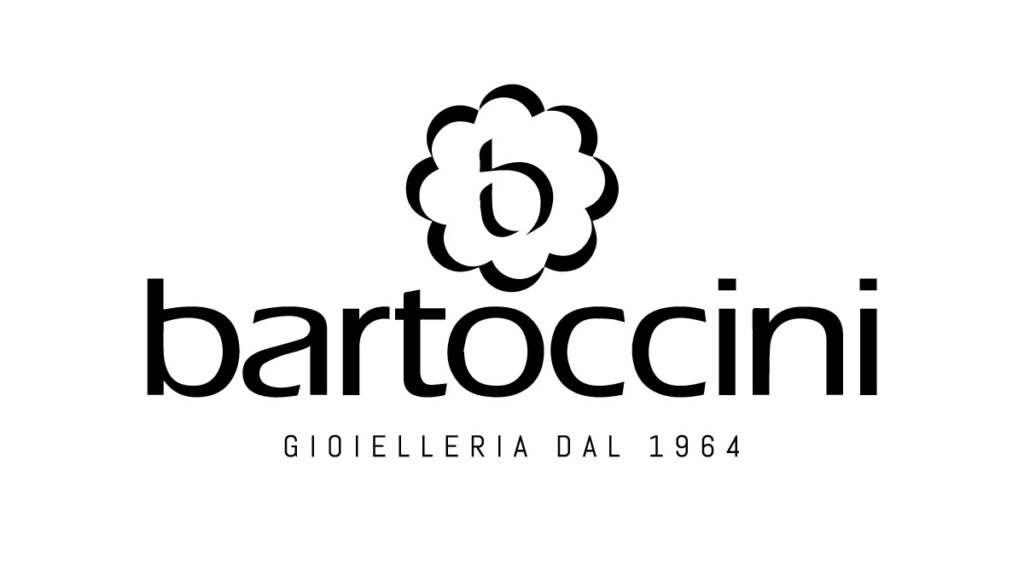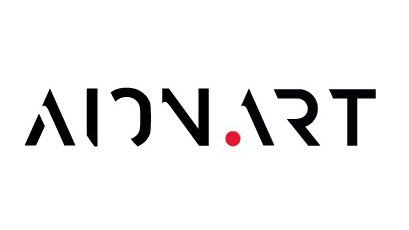Perugino in Perugia
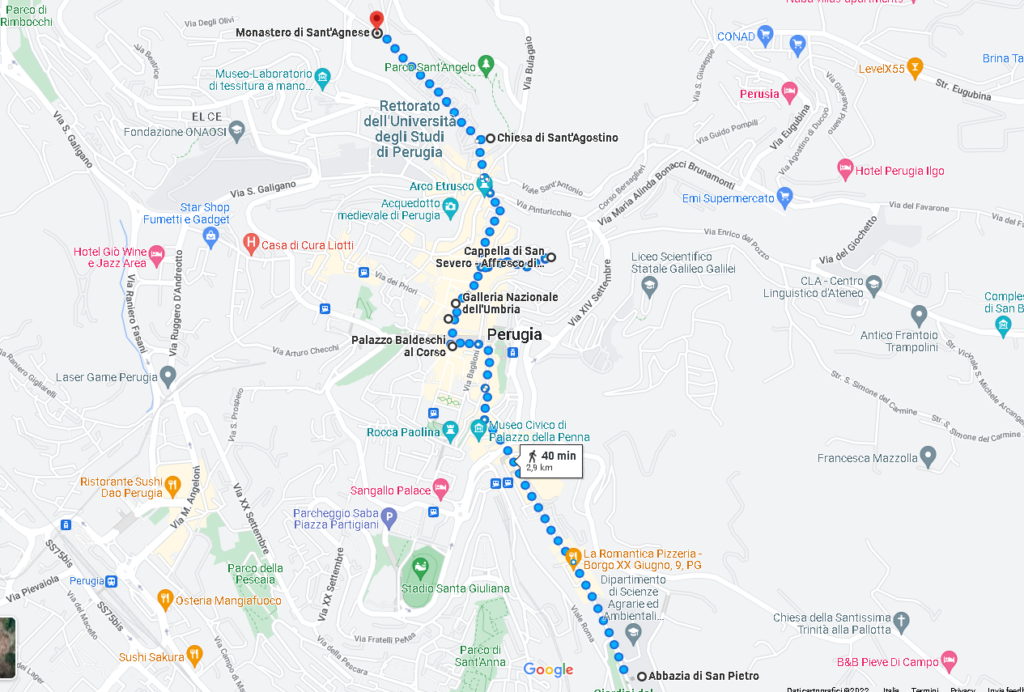
Perugia:
Abbey of San Pietro
Borgo XX Giugno, 74, 06126 Perugia PG
Perugino, Saint Mauro, Saint Scolastica, Saint Pietro Vincioli, Saint Ercolano and Saint Costanzo, 1496-1500, oil on panel, 28 x 33 cm ca., Perugia, Abbey of San Pietro
The tablets belonged to the predella of the large altar machine of the church of San Pietro in Perugia.
Among the saints represented, some of which are the most important for the order of the Benedictines who lived here, there is also the alleged portrait of Abbot Don Lattanzio, the first client of the complex work, under the guise of San Pietro Vincioli, depicted showing more characteristic somatic features than the other figures.
Two of the three Patrons of Perugia are also depicted: the two bishops Saint Ercolano, who rose to the role of “Defensor civitatis” during the barbarian siege of Totila, and Saint Costanzo.
Perugino, Piety, oil on panel, 144 x 152 cm, Perugia, Abbey of San Pietro
The panel was originally conceived as cymatium for the large two-sided polyptych for the church of Sant’Agostino in Perugia. The historian Serafino Siepi reports that in 1816 the work was purchased by the Cassinensi monks of San Pietro from the Augustinian friars, in order to replace the Conception of the Virgin Mary by Giovan Battista Salvi called “Sassoferrato” which had been transferred to Rome in 1813. The theme, of northern origin, was used by Perugino also in other works, such as the one, now preserved at the Fondazione Cassa di Risparmio in Florence. The critic, who over the centuries has expressed positive opinions about the quality level of the work, dates the cimasa back to Perugino’s late artistic phase, (1512-1515), considering the pale and delicate color range.
Palazzo Baldeschi al Corso
Corso Pietro Vannucci, 66, 06121 Perugia PG
Perugino, Saint Jerome penitent, about 1515, 133 x 110 cm, oil on canvas, Perugia, Fondazione Perugia
The work was probably originally conceived as a processional banner. An elderly Saint Jerome with long hair and a thick, white beard, dressed as a hermit, is kneeling in front of the Crucifix, in the act of hitting his chest with a stone. His attributes (the tamed lion and the cardinal’s headgear) are next to him, as a sign of renunciation of earthly glories.
The canvas, which suffered some falls of color, was extensively repainted by the painter Giuseppe Carattoli in the eighteenth century, when it was also equipped with a frame.
Perugino, Madonna with Child and two cherubs, about 1495, oil on panel, 34,4 x 50,5 cm, Perugia, Fondazione Perugia
This Madonna with Child was probably realized around 1495, since the work presents some points in common with the coeval Pala dei Decemviri.
Influenced by the severe climate imposed by the monk Girolamo Savonarola during his short Florentine rule, Vannucci represents a very austere Madonna: the Virgin is still very young but the expression on her face is extremely serious, her hair doesn’t present any fashionable hairstyles. The colors of her dress are intense but present softly nuanced shades (i.e. the green of the mantle and the red of the robe), recalling the Venetian experience.
Nobile Collegio del Cambio
Corso Pietro Vannucci, 25/D, 06121 Perugia PG
Perugino, Decoration of the Sala dell’Udienza, 1500, Perugia, Nobile Collegio del Cambio
In 1499, Perugino, who was at the peak of his career, received the official assignment of painting the Sala delle Udienze (Audience Room) by the Arte del Cambio, which also chose the decorative program.
Starting from the vault, the artist depicted an Allegory of Fortune, with the Triumph of Apollo and the planets accompanied by the signs of the Zodiac. The Triumph of Virtues is painted on the walls: the four Cardinal Virtues are frescoed as virtuous men of classical antiquity, while the three Theologians Virtues are accompanied by episodes of the life of Christ (the Nativity and the Transfiguration) and an Eternal with Prophets and Sibyls; the figure of Cato Uticense, on the right side of the entrance, introduces the cycle.
Between the two groups of Illustrious Men there is a small en trompe-l’œil framework, containing the self-portrait of Perugino; at the bottom, an autocelebrative cartouche depicts the artist as the one who rediscovered -or, rather- invented the pictorial art.
Galleria Nazionale dell’Umbria
Corso Pietro Vannucci, 19, 06123 Perugia PG
Various Works
The National Gallery of Umbria preserves the largest collection of works by Perugino. Among the various paintings, there are the works of the Master and the followers originally conceived to adorn the churches of the territory, such as the Opistograph altarpiece and the Nativity from Monteripido, the tablets of San Bernardino, realized by various artists, and the Martyrdom of San Sebastiano, from San Francesco al Prato, as well as other altarpieces realized on commissions by different brotherhoods of Perugia and by some noble local families (Adoration of the Magi and Pala Tezi).
Chapel of San Severo
Piazza Raffaello, 06122 Perugia PG
Perugino e Raffaello, Trinity and saints, 1505-1508 e 1521, fresco, 175×389 cm, Perugia, Chapel of San Severo
The work was initially commissioned to Raphael in 1505 by the Camaldolese monks, who had built the monastery and church of San Severo, in the district of Porta Sole, in Perugia.
Raphael painted a Trinity, with the figures of God the Father (today only partially preserved), the dove of the Holy Spirit and Jesus Blessing, with the angels and the six most important saints for the Order of Camaldoli.
The painter did not finish the work: he left for Rome in 1508, after being called by the Pope, and never came back to Perugia.
After Raphael’s death in 1508, Perugino was called upon to complete the unfinished fresco, and he painted six saints on the inferior register: Saint Scolastica, Saint Jerome, Saint John the Evangelist, Saint Gregorio Magno, Saint Bonifacio and Saint Marta.
Church of Sant’Agostino
Piazza Domenico Lupattelli, 3, 06123 Perugia PG
Copy of the dismembered Polyptych of Sant’Agostino
The Polyptych of Sant’Agostino is a large complex of tables (dismembered and partially lost) realized by Perugino and his workshop during two phases (1502-1512 and 1513-1523, the year of his death). The large painting was commissioned as an altarpiece for the church of Sant’Agostino in Perugia; in 1495, the Augustinian friars entrusted Mattia di Tommaso da Reggio with the construction of the two-sided wooden structure to house the paintings, which was then completed in 1500. Over time, and definitively after the Napoleonic dispossession, the tables were dispersed and are now collected in various museums around the world.
Monastery of Sant’Agnese
Via Sant’Agnese, 8, 06123 Perugia PG
Perugino, Madonna of Graces between two patrons, 1515-1522, fresco, 170 x 230 cm, Perugia Monastery of Sant’Agnese.
The work was commissioned to Perugino for the monastery of the Poor Clares nuns of Sant’Agnese monastery, a cloistered community still active in Perugia, in the district of Porta Sant’Angelo.
The Virgin, standing before a typically Umbrian landscape, opens her arms in the act of blessing; just above her head two angels are floating in the air, while two small figures at her feet probably represent the two patrons of the fresco, dressed in a Franciscan robe. There are various hypotheses regarding the identity of the patrons: in fact, there is an inscription at the bottom of the painting that seems to bear the names of Sister Euphrasia and Sister Eustochia, but the heavy repaintings suffered by the fresco over the past two centuries made it difficult to read.


